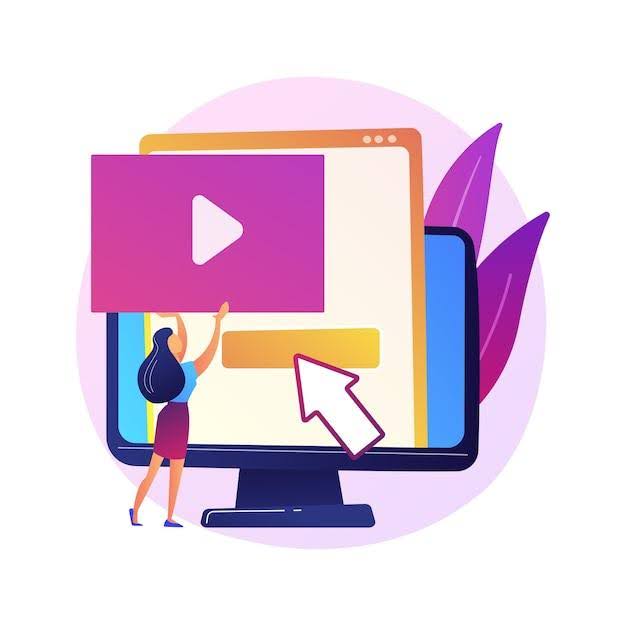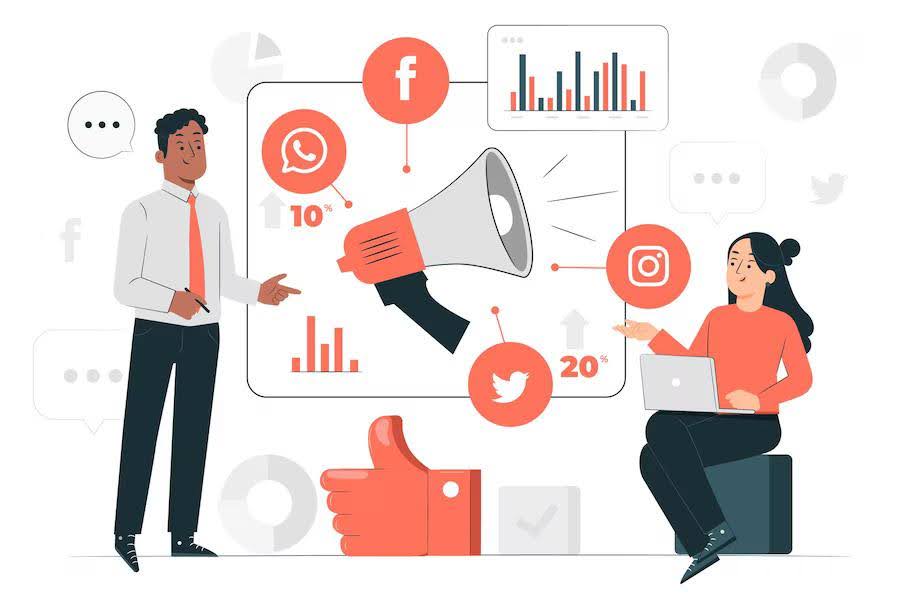Published on: 01 Dec 2020
Reading time: 13 minutes
What is Rich Media Ads? A Brief Overview.
Rich media mobile ads are a great way to engage your audiences, even when interacting with the paid advertising formats. Google defines rich media ads as the format of ads that primarily use elements in addition to just text and images. For instance, ads in the rich media format can be expandable or floating on the screen. The focus is on breaking the clutter and making each rich media property stand out on the page.
Rich media ads tend to consume relatively more resources in production and running the ads than static banner ads. However, these marginal costs are overshadowed by the benefits provided by the rich media ads. They tend to deliver higher CTRs, engagement rates, and cover a broader set of metrics to give a more incisive understanding of the audience.
Why Should Publishers Consider Rich Media Ads?
1. Rich Media Ads Increase Revenues based on Higher CTR and CPM.
Even the most established publishing giants often struggle to monetize their website's traffic to its full extent. This is primarily because Google's remuneration policies are more titled towards giving the visitor an optimal experience. This is why Google is blocking ad formats like intrusive ads and pop up ads across its ad networks.
Ads for publishers, who are adopting rich media formats, can be an excellent avenue for garnering revenue growth. Rich media ads require a higher cost-per-mile for the advertiser. When its is multiplied with higher impressions since rich media is engaging, you will experience higher revenues.
Banner ads on mobile formats for publishers garner a CPM between $0.15 – $2.00, depending on the device's OS. The same CPM gets catapulted to a range between $4 - $15 for rich media interstitial ads.
2. Rich Media Ads Provide a More Detailed Understanding of the Audience's Interaction with the Platform.
Rich media offer a whole range of KPIs for publishers and brands using the publishers' ad inventory. The typical banner ad has a limited set of metrics covered by Google Ads. These revolve around impressions, clicks, CTRs, CPMs, CPAs, and a few more. Rich media ads, depending on the sub-format you choose, offer a more diversified selection of KPIs.
Rich media mobile ads also show the number of reruns on the asset. Metrics like impressions do not measure this depth of interaction. Rich media ads also show the pause rates, completion rates, exit rates, and several other metrics. These can help you and advertisers to optimize the inventory and the creatives. Google offers enough metrics you can explore to understand your audience with rich media mobile ads.
3. Rich Media Ads Optimize Revenue Per Unit of Available Ad-Space.
The average benchmark CTR for ads on the Google Display Network tends to be around 0.5%. Rich media ads tend to have CTRs in the range of over 250% more than their static banner counterparts. This is because rich media for publishers are designed to attract and engage audiences instead of impeding their experience. That is the crucial reason why higher CTRs help you in getting more revenue from the same ad unit.
At the same time, rich media ads can also convey more information using the same ad spot. For a publisher, that might seem a little alarming as the advertisers can now tell their story using lesser ad inventory. In reality, as a publisher, your focus should be on providing more impressions, engagement, and CTR since that is how you drive your revenues. With rich media ads, each of your ad units will be earning 2.5x more than your average static banner ad. Hence, on an aggregate basis, both you and your advertisers are in a win-win situation.
4. Rich Media Ads Help Publishers in Generating Ad Revenues without Compromising on the User-Experience.
In July 2017, Google changed its policies around pop-ups and pop-under ads. For most of the publishers, user experience was not even a part of the mainstream conversation. Google ensured that it did not include any publisher website on its advertising network using pop-up or pop-under ads. While some of these websites may show Google Ads, none of the advertisers or brands using Google Ads will bid for this inventory.
For the publishers, this has been a blessing in disguise. Google claims to share 95% of digital ad revenues with publishers. Google's revenues, mostly dependent on its advertising business, have nearly doubled since the pop-ups and pop-under ads were banned in 2017. Going by that logic, publisher revenues for websites that have adhered to the update policies must have also grown.
Publishers have historically used pop-ups and pop-under ads as they provide an extra category for the mobile ads inventory and help in controlling impressions. Rich media ads can fulfill all of these goals without hampering the users' experience on the platform or breaching Google's advertising policies.
5. Rich Media Ads Can Help Brands Stand Out Even On Crowded Platforms.
We have discussed the 'banner blindness' phenomenon in an earlier post. The idea builds on the fact that motivated audiences with a strong intent to find information will ignore even the most creative ads.
As a publisher, it is easy to focus on increasing your ad inventories per page for maximizing revenues per visit. For instance, you can explore the Speedtest by Ookla page. On average, it carries 4-5 ad spots right around the tool used by people to test their internet speeds. For the publisher, this might yield greater revenues incremental ad spots that provide incremental revenues.
For the brand, this might not be an optimal strategy. Assume that you are a brand whose ad is showing up in one of these five banners on the tool. There is a high probability that audiences will not interact with the ad unless it stands out. Rich media ads can help you as a publisher to provide exceptional ad interactions even if your page is already crowded with spots.
6. Rich Media Ads Can Help in Generating More Revenues from the Shorter Sessions on the Website.
Sonic created a very creative campaign using a rich media format. The brand wanted to promote its offers of discounted shakes after 8 PM. So, instead of going for a banner ad with creative copies, the brand used rich media ads with neon animations to draw attention.
As the user hovers the mouse to the expansive ad, she sees a countdown to the offer with a CTA for the nearest store. The campaign garnered a CTR of 6%, near 12x the average CTR for display campaigns. But a more noteworthy statistic from the same campaign is the average engagement session – which lasted for nearly 50 seconds. To put that in context, an average Instagram session lasts for a little over 3 minutes. By that measure, users were spending nearly 25% of the time they generally spend on their every Instagram visit.
Such engagement density paired with high CTRs is exactly what makes ads in rich media formats a very attractive avenue for publishers. They can earn more revenues even in shorter but more engaging visits.
7. With Sequence Ads and Rich Media, Brands Can Tell a Cohesive Story in an Efficient Format.
The average video ad tends to last for about 11 to 20 seconds for the best performing ad spots. However, video ads can slow your page-loading speeds, which have a direct correlation with your website's organic rankings. So, how do you support the campaigns that want to tell a more cohesive story?
You can use Airtory's sequence ad in a rich media format to help your partner agencies and brands deliver a more cohesive campaign. Airtory allows you to create a series of rich media ads, where the campaign evolves in stages with dynamic ads. Each viewer interaction is tracked, ad placement is made to provide a cohesive narrative to the users who are frequently interacting with the ad.
This helps in the brands advertising on your platform tells a longer story without compromising your page load speeds with video ads. It helps you as a publisher since you can extract more views from the same user who have interacted with your ad.
8. With Permission-Based Ads, Brands Can Control Their Ad Budgets More Proficiently.
The problem with some video ads is that they tend to hinder user experience by not asking for permission. Assume that you are running a sports data publishing website that also supports video ads. Imagine a user sitting in her office. She opens your website and is treated with a video ad that has the audio running in the background without her specific permission. For websites that have a lot of content on one page, locating and muting such ads can be difficult for the viewers. Such experiences, although not intentional, can increase your bounce rates and adversely affect both your organic rankings & traffic and your revenues.
At the same time, your brands end up paying for the view if the user cannot close the ad in time. This leads to inflated ad performance and does not help either the brand or the publisher in the long run. Rich media ads solve this problem by keeping users' permission at the center of the ad playing. The user can either hover over to the ad or click play or pause or mute to interact with the ad.
Since it is in rich media format, you will be able to measure all the clicks, pauses, mutes, and exits for the ad.
9. Rich Media Ads Can Serve as an Avenue to Increase Engagements with Gamified Ads for Publishers.
Rich media ads have created an exemplar category for engagement. With games embedded in the rich media mobile ads campaigns, publishers can further drive this engagement rate.
Take, for instance, the campaign launched by Takis. The brand had launched a new consumer-packaged product and was targeting young adults. It created a series of 360-degree media assets using rich media formats. In one of these assets, the users were tempted to find a Takis packet in a 360-degree video. The engagement rate stood at 7.7% for the campaign, generating significant traction.
The campaign highlights that brands and advertisers understand the impact of using gaming and rich media for driving engagement. If your ad inventories do not support rich media ads altogether, you will entirely miss out on this revenue stream.
10. Publishers Can Offer Space for Both Brand Awareness and Lead Generation Campaigns Using the Same Inventory with Rich Media.
As a publisher, your ad inventories are often largely populated by banner spots and video spots. This borderline pushes out campaigns seeking lead generation. Most advertisers are aware that search-engine text ads have an average CTR of over 5%. This is 10x that of display ads on the Google Ads network.
The key difference between display campaigns and text ads for the brand is the ads' information. Display campaigns, by design, carry more information about the brand and are creating recall. SERP text ads focus on providing immediate information necessary for the transaction – price, offers, product details, and so on.
Rich media ads have the flexibility of offering both the forms of information in one media asset. Hence, when positioned correctly, one rich media mobile ad campaign can address the needs for both lead generation and brand awareness. By tapping into both the areas, you, as a publisher, can expect growing revenues.
11. Within a Specific Channel of Mobile Ads, Publishers Can Increase Their Inventory by Ad Formats.
Banner ads and video ads offer a limited set of formats, which naturally limits your ad inventory diversity. It will impact the brands that want a richer ad inventory. So, even if you have not felt the pressing need, you leave some revenues on the table.
Rich media ads allow you to provide inventory for banners, dynamic creatives, expanding creatives, VPAID ads, and many other formats. Each ad format has more sub-variants available. Rich media ads will give more options to the brands that want to advertise on your platform. At the same time, rich media ads can widen the appeal of our platform for a larger set of brands & agencies.
You can explore more ad formats at this gallery procured by Google.
12. Publishers Can Use Google Lightbox to Lend More Space for Creativity to the Advertisers.
Google Lightbox is a new format available in the rich media category. Its primary objective is to drive engagement and reduce false positives when users accidentally click or engage with an ad.
The brands and advertisers using your ads inventory have already invested in producing marketing collaterals like videos, product portfolios, images, and other material. Using Lightbox, they can use this material in a slider format. The ad expands into a full-screen engagement only when a user clicks on it.
Airtory augments the potential of Lightbox ads by offering a unique catalog-based template which serves as an aggregated platform for serving ads. It allows you to show multiple products in the form of a catalog, displayed in the general square-banner dimensions available on the GDN.
Each individual product in the Airtory Lightbox creative format, can redirect to a separate link. Like Google Lightbox, the Airtory Lightbox creative format is also expandable and takes over the page as soon as it records an engagement. In addition to that, it allows the advertiser to use the same real-estate space on the page to showcase more products.
This helps the brands and advertisers using your platform pay for engagements only when they engage with the ad. At the same time, it allows them to focus on conversions instead of just impressions. VCPM and CPE bidding formats help you get revenues with both impressions and engagements.
13. Publishers Can Help Brands Create Uniform Experiences Across Rich Media Ads, Landing Pages, and Brand Websites.
Brands want parity between ads, websites, and landing pages/micro sites. All the while, they understand the fact that common brand experience across all the three touchpoints is critical in optimizing for conversions.
By supporting rich media mobile ads, you are allowing brands and advertisers to give your audience a more immersive experience in the ad's confines.
Rich media ads support multiple exit links. The brands & advertisers can use this to know more about the specific action taken on the ad. Later, this can be used to provide a more personalized landing page experience.
You can explore the Airtory platform to understand how you can support rich media and landing page parity.
14. Using Airtory, Publishers Can Provide More Transparent Pricing Mechanisms for Ads with Rich Media.
Ads for publishers are a great way for websites to monetize their traffic. Google Ads is the layer between the publisher and the advertiser. Hence, the brand has to rely on third-party systems for ensuring it is benefiting from the ads.
Several publishers have fraudulent traffic and other advertising practices in place. Such malpractices pollute the advertising ecosystem and erode the brand's trust in the publishing platform.
Airtory's rich media platform solves this problem by offering real-time analytics and fraud detection. Brands and advertisers can analyze their campaign's performance with real-time data reporting and greater reliability on the traffic metrics – all on one platform.
15. Rich Media Can Open Up New Revenue Sources in the Form of Ancillary Services Generated from Mobile Ads for Publishers.
The traditional media buying model made agencies the middlemen between the publishers and the brands, where the agencies took 15% commission for all media buying. Google Ads has now replaced that middleman. So, the revenues accessible to publishers are now a direct function of the traffic they generate and their user experience.
Instead of just optimizing ad spot revenues, you can offer creative production services as well. With Airtory, making rich media ads and dynamic landing pages has become easier. If you have access to design talent for your website, you can practically produce ads in-house and help brands have more cohesive advertising operations.
In Conclusion
Even for established publishers, revenues coming from programmatic ads have been fluctuating. With rich media ads, you can mitigate those risks. By supporting rich media ads your platform can provide more engagement, stronger impressions, and incremental conversions to your customers. At the same time, it can generate greater revenues coming from better ad performance and improved on-page experience.
To know more about how Airtory can help you increase your revenues with rich media ads, click here.
Schedule a demo




